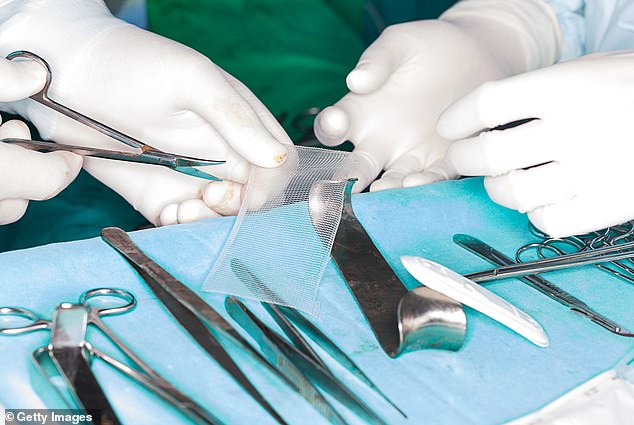A coroner has issued a warning to doctors following the death of a man whose life-threatening hernia was misdiagnosed as a stomach bug.
Earlier this month, Nigel Parsley ruled that there had been a ‘missed opportunity’ to save the life of Thomas Glover, who had been discharged from hospital with suspected gastroenteritis.
It was later discovered that the 71-year-old had suffered a strangulated hiatus hernia – a medical emergency where a portion of the stomach is trapped in the chest and the blood supply is cut off. He eventually suffered organ failure and a cardiac arrest.
Clinicians say this rare but potentially deadly problem is often missed, and they are now urging GPs to be alert to the warning signs.
Mr Glover, who lived in Suffolk, went into hospital on April 13 last year with persistent vomiting. He was admitted, but by the following evening was deemed ‘clinically well enough for discharge’.
However, two days later he became acutely unwell and returned to hospital, where his hiatus hernia was discovered.
Suffolk senior coroner Mr Parsley concluded that Mr Glover died as a result of the ‘naturally occurring strangulation of a hiatus hernia with delayed surgical intervention’ following a ‘missed opportunity’ for diagnosis.

Earlier this month, Nigel Parsley ruled that there had been a ‘missed opportunity’ to save the life of Thomas Glover, 71, who had been discharged from hospital with suspected gastroenteritis

Krishna Moorthy, a gastro-intestinal surgeon at Imperial College Healthcare NHS Trust in London (pictured), said: ‘Strangulated hernia is a very dangerous condition that is often overlooked’
The cause of death was confirmed as a rolling hiatus hernia – a less common but often more serious form of the condition.
It is not the first time that a coroner has sounded the alarm over misdiagnosed hernias – there have been three warnings in the past 12 months alone.
In February, Pamela Marking, 77, died after a physician associate mistook her strangulated hernia for a nosebleed.
Krishna Moorthy, a gastro-intestinal surgeon at Imperial College Healthcare NHS Trust in London, says: ‘Strangulated hernia is a very dangerous condition that is often overlooked.’
About 60 per cent of people in middle and later life suffer from a hiatus hernia.
The hiatus is a small opening in the diaphragm – the sheet of muscle which separates the chest from the abdomen.
This opening allows the oesophagus – the tube which links the mouth and the stomach – to pass through the diaphragm and connect to the stomach.

In February, Pamela Marking, 77, (pictured) died after a physician associate mistook her strangulated hernia for a nosebleed

About 60 per cent of people in middle and later life suffer from a hiatus hernia. The hiatus is a small opening in the diaphragm – the sheet of muscle which separates the chest from the abdomen
Usually the muscles around the hiatus form a tight seal which keeps stomach acid from flowing back up into the oesophagus.
But if this area weakens – due to age, pressure in the abdomen or other factors – part of the stomach can push up through the hiatus, leading to a hiatus hernia.
There are two main types. The most common is a sliding hiatus hernia, where the upper part of the stomach and lower part of the oesophagus slides up through the hiatus into the chest cavity. Symptoms include acid reflux – also known as heartburn – bad breath and vomiting.
The NHS advises: ‘It does not normally need treatment if it’s not causing you problems.’
The other type, a paraoesophageal hernia – or a rolling hiatus – is less common and more serious.
In this, the lower part of the oesophagus and the junction with the stomach stay in their normal position, but a part of the stomach pushes up through the hiatus and sits next to the oesophagus in the chest cavity. The stomach can become trapped, or strangulated, cutting off its blood supply.
Between five and 15 per cent of hiatus hernias are paraoesophageal. They often require surgery and can be fatal if not treated.

Between five and 15 per cent of hiatus hernias are paraoesophageal. They often require surgery and can be fatal if not treated
Mr Moorthy says: ‘Patients with a rolling hiatus hernia will often experience an enlarged stomach, breathlessness, chest pain. The stomach can also compress the food pipe and patients may often struggle to swallow.’
In his prevention of future deaths report, coroner Mr Parsley said: ‘Many non-gastro specialist medical clinicians within the NHS are unaware of the difference in the two types of hiatus hernia and are therefore unaware of the additional risks.’
He stated that ‘the NHS England guidance makes no distinction between the two types of hiatus hernias’.
Mr Moorthy adds: ‘We see a lot of patients who have presented to their GP multiple times complaining of shortness of breath andthey are being treated for asthma or chronic obstructive pulmonary disease, which includes emphysema and bronchitis, when in fact it is a hernia.
‘If there is chest pain, with no underlying heart condition, doctors need to be aware that a hernia is a possible cause.’
He agrees that the NHS should look to update the advice on its website to distinguish between the types of hernia, saying: ‘There definitely needs to be more awareness on this.’







